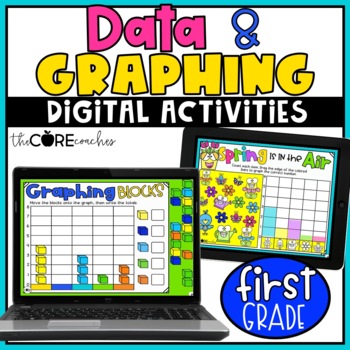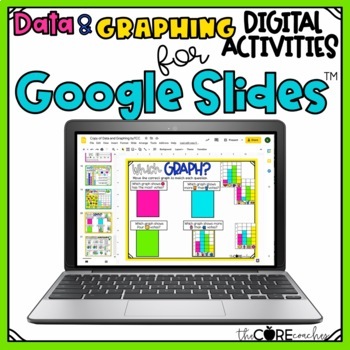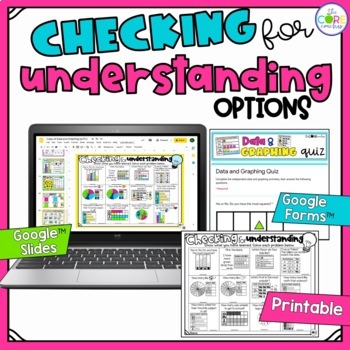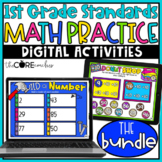Data and Graphing - Digital Math Practice Activities - 1st Grade Math
- PDF
- Google Apps™
- Internet Activities
- Easel Activity
- Easel Assessment

Also included in
- This bundle of independent digital activities are meant to be assigned as extra math practice for students once they have been taught about the math topics.12 Math Topics are included to cover all first grade CCSS Standards. Each topic contains 20 digital activities for students to complete. The actPrice $36.00Original Price $48.00Save $12.00
Description
These 20 independent digital graphing and data activities are meant to be assigned as extra math practice for students once they have been taught about tallying, reading, and recording data on bar graphs, picture graphs, and pie charts.
The activities are compatible with Google Slides and Seesaw, and come preloaded and ready to implement. They are perfect for face-to-face instruction as well as distance or blended learning models.
The digital activities can be assigned to students individually or they can also be accessed for digital use as a whole class or in small groups. They also pair perfectly with our printable Data and Graphing First Grade Worksheets.
Give your students the supplemental math practice they need in just minutes with zero prep!
This GRAPHING AND DATA independent digital math practice resource includes a PDF with:
- A link for the activities on Google Slides
- A link for the activities on Seesaw
- A link for the Checking for Understanding quick assessment as a Google Forms quiz
- Printable Checking for Understanding quick assessment (and answer key)
- Teacher overview and instruction sheet
- Activities at-a-glance sheets for teacher reference
We also include step-by-step instructions and a video tutorial on how to access the activities on SeeSaw and Google Slides.
Now your students can be self-directed as they engage in extra math practice with their counting skills without having to provide paper copies!
★★★★★★★★★★★★★★★★★★★★★★★★★★★★★★★★★★★★★★★★★★★★★★★★★★
Follow us to get updates on our newest products!
For helpful tips, hints, and classroom strategies check out our website!







